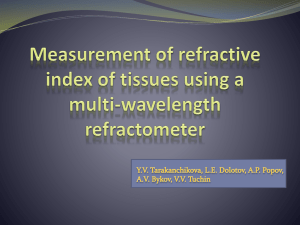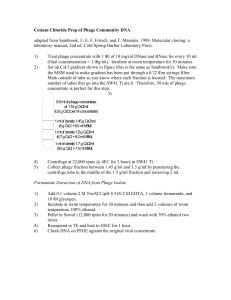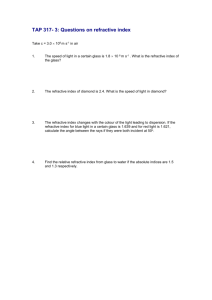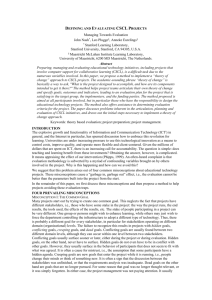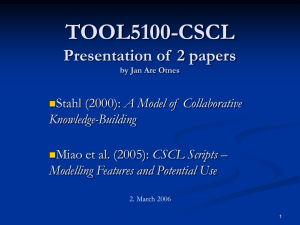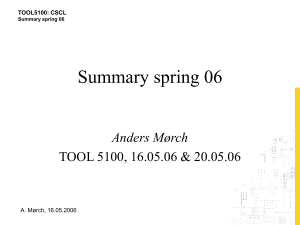BrdU density substitution
advertisement
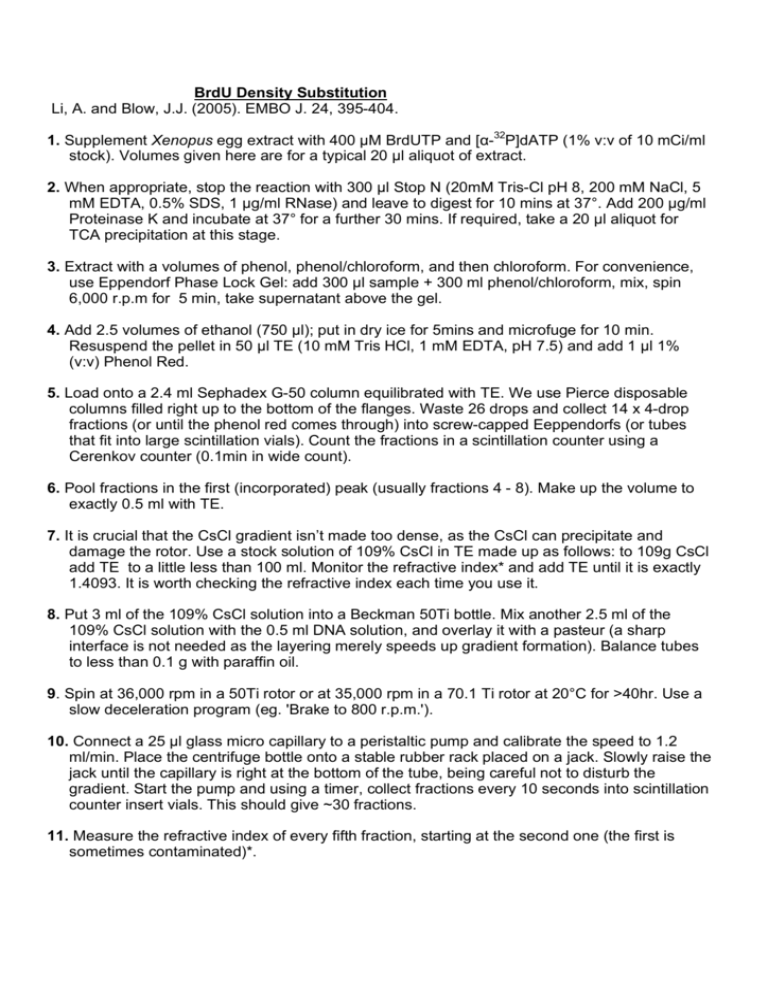
BrdU Density Substitution Li, A. and Blow, J.J. (2005). EMBO J. 24, 395-404. 1. Supplement Xenopus egg extract with 400 µM BrdUTP and [α-32P]dATP (1% v:v of 10 mCi/ml stock). Volumes given here are for a typical 20 µl aliquot of extract. 2. When appropriate, stop the reaction with 300 µl Stop N (20mM Tris-Cl pH 8, 200 mM NaCl, 5 mM EDTA, 0.5% SDS, 1 µg/ml RNase) and leave to digest for 10 mins at 37°. Add 200 µg/ml Proteinase K and incubate at 37° for a further 30 mins. If required, take a 20 µl aliquot for TCA precipitation at this stage. 3. Extract with a volumes of phenol, phenol/chloroform, and then chloroform. For convenience, use Eppendorf Phase Lock Gel: add 300 µl sample + 300 ml phenol/chloroform, mix, spin 6,000 r.p.m for 5 min, take supernatant above the gel. 4. Add 2.5 volumes of ethanol (750 µl); put in dry ice for 5mins and microfuge for 10 min. Resuspend the pellet in 50 µl TE (10 mM Tris HCl, 1 mM EDTA, pH 7.5) and add 1 µl 1% (v:v) Phenol Red. 5. Load onto a 2.4 ml Sephadex G-50 column equilibrated with TE. We use Pierce disposable columns filled right up to the bottom of the flanges. Waste 26 drops and collect 14 x 4-drop fractions (or until the phenol red comes through) into screw-capped Eeppendorfs (or tubes that fit into large scintillation vials). Count the fractions in a scintillation counter using a Cerenkov counter (0.1min in wide count). 6. Pool fractions in the first (incorporated) peak (usually fractions 4 - 8). Make up the volume to exactly 0.5 ml with TE. 7. It is crucial that the CsCl gradient isn’t made too dense, as the CsCl can precipitate and damage the rotor. Use a stock solution of 109% CsCl in TE made up as follows: to 109g CsCl add TE to a little less than 100 ml. Monitor the refractive index* and add TE until it is exactly 1.4093. It is worth checking the refractive index each time you use it. 8. Put 3 ml of the 109% CsCl solution into a Beckman 50Ti bottle. Mix another 2.5 ml of the 109% CsCl solution with the 0.5 ml DNA solution, and overlay it with a pasteur (a sharp interface is not needed as the layering merely speeds up gradient formation). Balance tubes to less than 0.1 g with paraffin oil. 9. Spin at 36,000 rpm in a 50Ti rotor or at 35,000 rpm in a 70.1 Ti rotor at 20°C for >40hr. Use a slow deceleration program (eg. 'Brake to 800 r.p.m.'). 10. Connect a 25 µl glass micro capillary to a peristaltic pump and calibrate the speed to 1.2 ml/min. Place the centrifuge bottle onto a stable rubber rack placed on a jack. Slowly raise the jack until the capillary is right at the bottom of the tube, being careful not to disturb the gradient. Start the pump and using a timer, collect fractions every 10 seconds into scintillation counter insert vials. This should give ~30 fractions. 11. Measure the refractive index of every fifth fraction, starting at the second one (the first is sometimes contaminated)*. 12. Count the 32P by Cerenkov. If the label is 3H liquid scintillant is needed (which may need to be diluted with H20 to prevent the CsCl precipitating). Under these conditions we expect densities of HH=1.79, HL=1.75, LL=1.71, with refractive indices of 1.4077, 1.4039 and 1.4003 respectively. *Using the Refractometer The refractometer only shows the dark/light interface when it is in approximately the right range (the refractive index of water is 1.333). To use the refractometer, put ~20 µl sample onto the glass and close the top. Looking through the lower eyepiece, wind the lower knob so that approximately the right range of refractive indices is in view (it may be necessary to focus the eyepiece by pulling up and down). Look through the upper eyepiece (it may be necessary to focus the eyepiece on the crosshairs by pulling up and down). Then use the upper knob to focus the dark/light interface (aim to get it looking greyish, rather than red or blue). Then use the lower knob to move the dark/light interface to the middle of the crosshairs. Read off the refractive index in the lower eyepiece (estimate the last decimal place). To change samples, open the top and wash with water from a squirt bottle. Wipe dry with a tissue. Store with a tissue between the glass plates.



